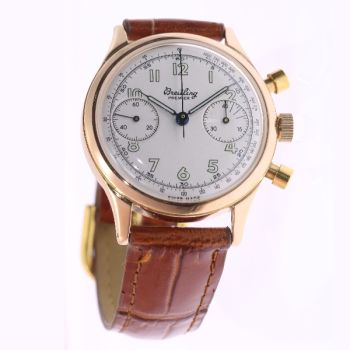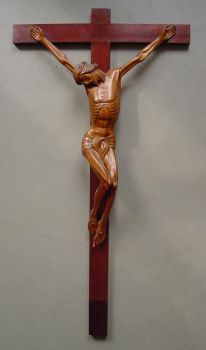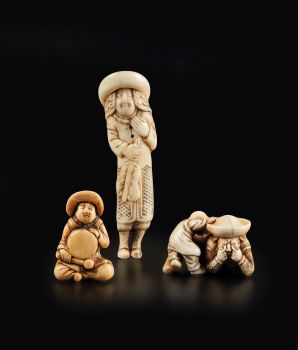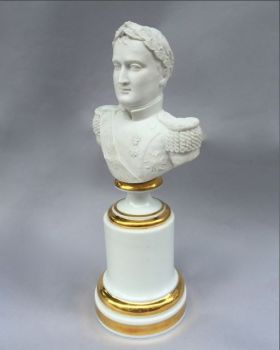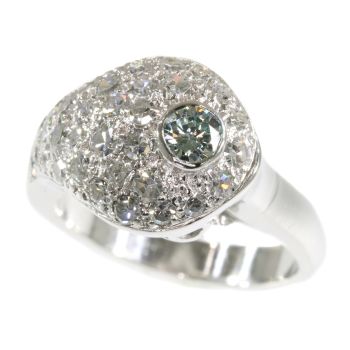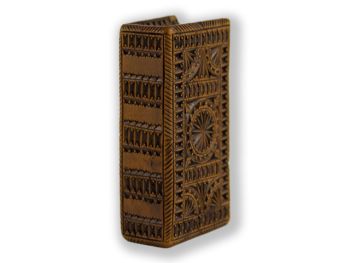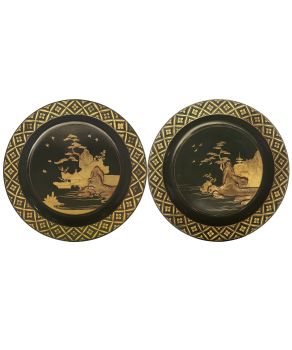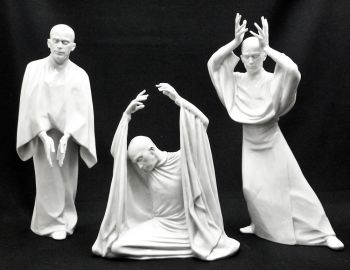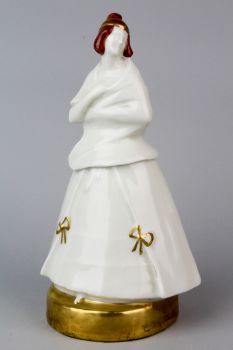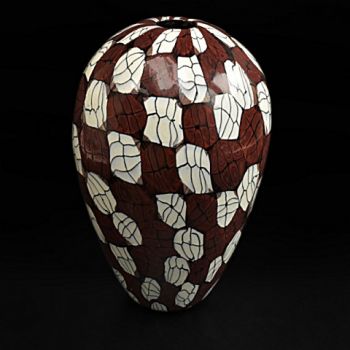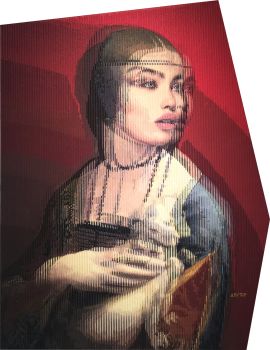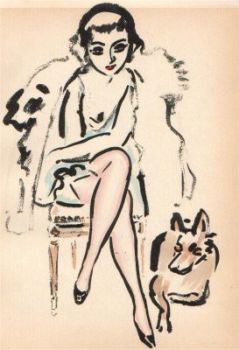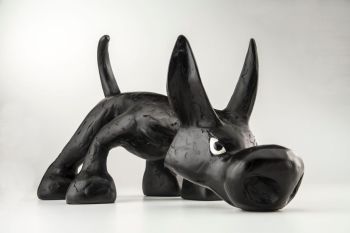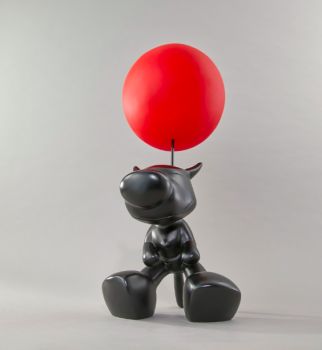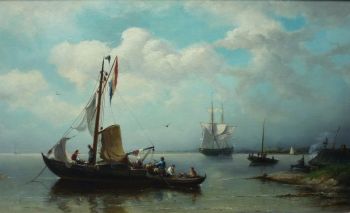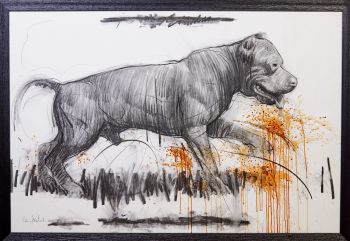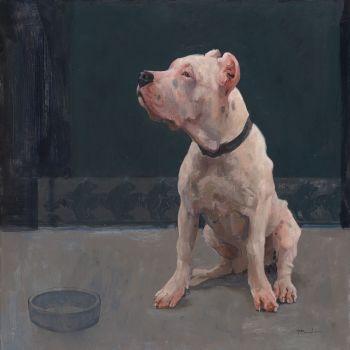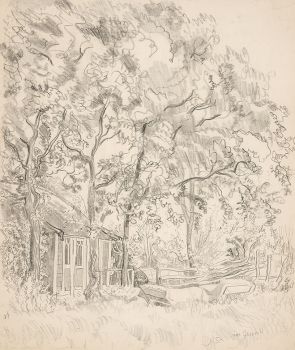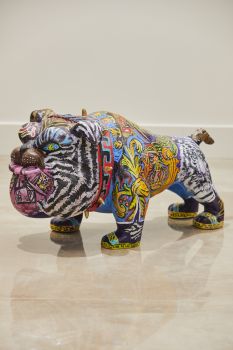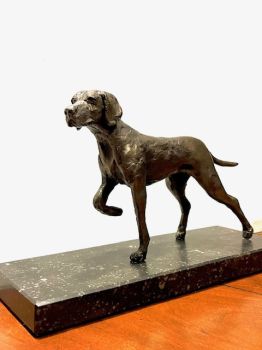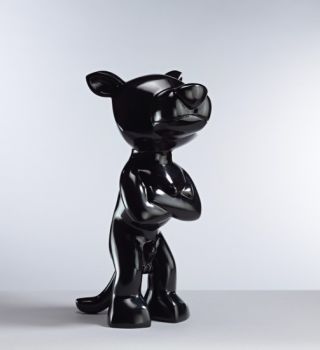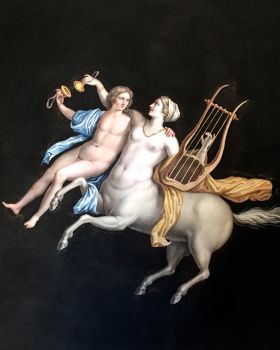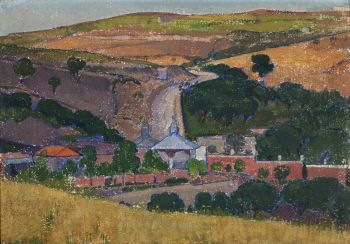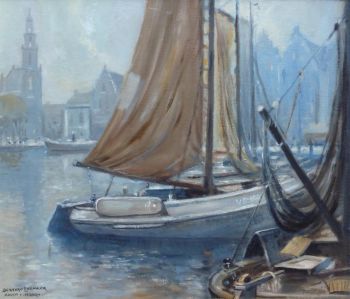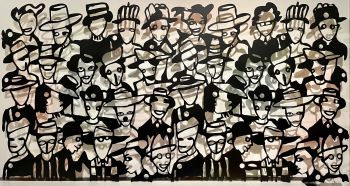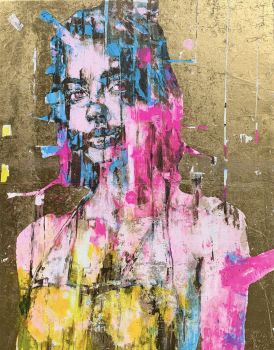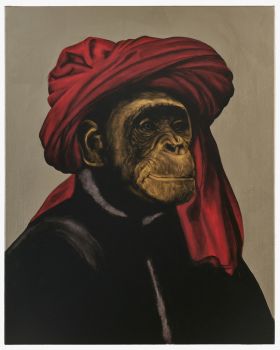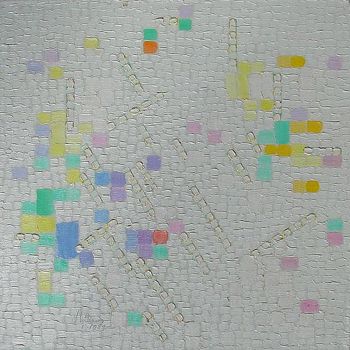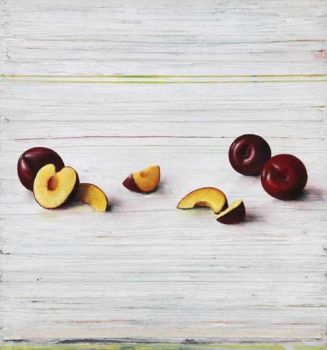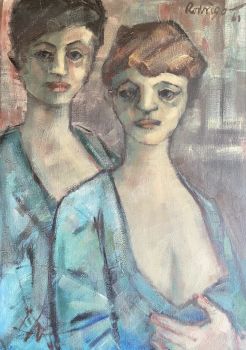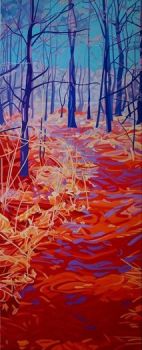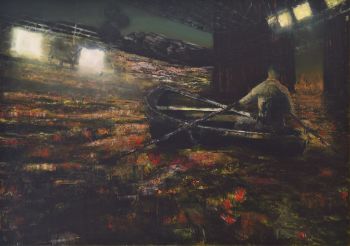Set Arita 'dog training' plates, 18th century 1700 - 1730
Artista Sconosciuto
SmaltoPorcellanaDipingere
22 cm
ConditionGood
€ 2.000
Verkoulen Oriental & European Antiques
- A proposito di opere d'arteThree rare Kakiemon decorated plates in blue and white depicting a dog trainer in the center surrounded by low moulded relief decoration, 18th century, around 1700-1730, Arita, Japan.
Blue and white
Dimensions: 22 cm diameter.
Three rare Kakiemon decorated plates with flanged (eight-foliated) border and brown edged rim.
The low moulded white relief decoration is a depiction of three scholars from a group called 'The Seven Sages of the Bamboo Grove'. The Sages are associated with a hedonistic lifestyle of drinking, poetry and music. Although the origin of the group and stories lay back in ancient China, it was widely represented in Japanese art from the 16th century to the end of the Edo period (1615–1868).
The central medaillon of the plates is decorated with a 'Namban' style figure of a European with a long legged and tailed dog creature. This is the kind of novelty design that was particularly popular in the Nagasaki market both with visiting Japanese and Dutch buyers. The motif has a theatrical origin. This kind of figure was in England called a “Jack Pudding”, in Germany “Hans Wurst” and in Dutch "Hans Buling". He was a comic and remarkable figure: a combination of a fool and clown with a coarse appearance, occasionally depicted as an animal trainer! The name Jack Pudding is derived from a buffoon who performs pudding tricks, such as swallowing a certain number of yards of black-pudding (blood pudding in a sausage casing).
These kind of subjects are also closely linked to a "Merry Andrew". When an audience began to being bored by a performance, the Merry Andrew would stir their attention by some antic, slapstick or clever quip. There is for example a mid 18th century Delft plate design known which shows two figures; the Mountebank Hans Buling (a Dutchman), and his assistant Merry Andrew with their monkey on a stage. This is a scene taken of the prints called “Cries of London” by Marcellus Laroon (1653-1702).
The reverse of the plates have a character mark 'arashi' (嵐) meaning storm. It is also discussed that it could be a variant of the Chinese character 'shòu' (壽) standing for longevity. The last possibility is less likely because it identifies the plates coming from the Higuchi kiln in the Nangawara valley and would date them later around 1770-1780.
Kakiemon is a production technique (and style) of generations of the Kakiemon family who established their workshop near Arita on the island of Kyushu. The pottery tradition which uses very fine white clay has survived until today: Kakiemon XV is currently active and is regarded as one of the ‘living national treasures’ of Japan.
These plates are decorated in 'Nanban' style because of the European figure depicted in the center of the plates. In the 16th century, the Japanese termed Europeans and foreigners as ‘Nanban’, meaning 'southern barbarians'. Despite Europe being west of Japan, this label originated from the Chinese view of southern foreigners as uncivilized. This term was broadened and copied by the Japanese culture, leading to foreigners being referred to as "Nanban" by Japanese citizens.
Condition: Very good, only one plate with a minor rim chip. No hairlines, restorations or other chips.
Provenance:
-Christies 13th May of 200, 'Live Auction 5967, Japanese Art & Design', lot 7.
-Lempertz no. 307815.
-German Private Collection 2024. - A proposito di opere artista
Può succedere che un artista o un creatore sia sconosciuto.
Alcune opere non sono determinate da chi sono state realizzate o sono state realizzate da (un gruppo di) artigiani. Esempi sono statue dell'antichità, mobili, specchi o firme non chiare o leggibili ma anche alcune opere non sono affatto firmate.
Inoltre puoi trovare la seguente descrizione:
•"Attribuito a …." A loro avviso probabilmente opera dell'artista, almeno in parte
•“Studio di ….” o “Officina di” A loro avviso un'opera eseguita nello studio o nella bottega dell'artista, eventualmente sotto la sua supervisione
•“Cerchio di…” A loro avviso un'opera del periodo dell'artista che mostra la sua influenza, strettamente legata all'artista ma non necessariamente al suo allievo
•"Stile di..." o "Seguace di..." A loro avviso un'opera eseguita nello stile dell'artista ma non necessariamente da un allievo; può essere contemporaneo o quasi contemporaneo
•“Modalità di…” A loro avviso un'opera nello stile dell'artista ma di epoca successiva
•"Dopo …." A loro avviso una copia (di qualsiasi data) di un'opera dell'artista
•“Firmato…”, “Datato…” o “Iscritto” A loro avviso l'opera è stata firmata/datata/inscritta dall'artista. L'aggiunta di un punto interrogativo indica un elemento di dubbio
•"Con firma....", "Con data...", "Con iscrizione..." o “Riporta firma/data/iscrizione” a loro avviso la firma/data/iscrizione è stata aggiunta da qualcuno diverso dall'artista
Sei interessato ad acquistare questa opera d'arte?
Artwork details
Related artworks
Artista Sconosciuto
Olandesi in miniatura18th century
Prezzo su richiestaZebregs & Röell - Fine Art - Antiques
1 - 4 / 12Artista Sconosciuto
UN RARO GRANDE TELESCOPIO GIAPPONESE IN PELLE LACCATA1750 - 1800
Prezzo su richiestaZebregs & Röell - Fine Art - Antiques
Artista Sconosciuto
COPPETTA CROGIOLO PICCOLA SAWASA GIAPPONESE 'FORMA PESCA'early 18th
Prezzo su richiestaZebregs & Röell - Fine Art - Antiques
Artista Sconosciuto
UN NETSUKE IN AVORIO DI UN OLANDESE CHE GIOCA CON UN RAGAZZINO18th century
Prezzo su richiestaZebregs & Röell - Fine Art - Antiques
Artista Sconosciuto
UN PICCOLO NETSUKE IN AVORIO DI UN OLANDESE CON UN TAMBURO1750 - 1800
Prezzo su richiestaZebregs & Röell - Fine Art - Antiques
Artista Sconosciuto
A rare Japanese export lacquer medical instrument box1650 - 1700
Prezzo su richiestaZebregs & Röell - Fine Art - Antiques
Artista Sconosciuto
UN NETSUKE MARINO IN AVORIO DI UN OLANDESE CHE TIENE UN FAN . CINESE18th century
Prezzo su richiestaZebregs & Röell - Fine Art - Antiques
Artista Sconosciuto
UN NETSUKE IN AVORIO DI UN OLANDESE CHE TIENE UN GALLETTO18th century
Prezzo su richiestaZebregs & Röell - Fine Art - Antiques
Artista Sconosciuto
The Stamford Raffles Secretaires.1800 - 1813
Prezzo su richiestaZebregs & Röell - Fine Art - Antiques
1 - 4 / 21Artista Sconosciuto
Four famille rose ‘Wu Shuang Pu’ wine cups, Guangxu mark and period (1875-1908)1875 - 1908
Prezzo su richiestaMenken Works of Art
Artista Sconosciuto
A Chinese porcelain blue and white 'Mantou Xin' bowl, Kangxi period (1661-1722)1700 - 1720
Prezzo su richiestaMenken Works of Art
Artista Sconosciuto
A blue and white Romance of the Three Kingdoms charger, Kangxi period (1661-1722)1661 - 1722
Prezzo su richiestaMenken Works of Art
1 - 4 / 24- 1 - 4 / 24
Bernard Leemker
'Volendammer vissersboten in de haven van Hoorn´20th century
Prezzo su richiestaGalerie Gabriëls
1 - 4 / 24- 1 - 4 / 8






